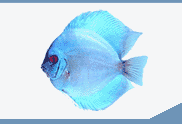

 |
||||||||||||
 |
||||||||||||
| Microscopes: What the fish hobbyist/breeder needs to know about them | ||||||
| Al Sabetta | March 1, 2002 | |||||
I was recently asked about microscopes for the hobbyist/breeder of fish. Admittedly, I have mixed feelings on the use of microscopes by hobbyists and breeders to identify pathogens. As a biologist I use a microscope daily in my work. It is an excellent tool to aid in the identification of a pathogen or to characterize anything too small to be clearly seen by the human eye. It has limitations though as it is only a tool. In order for it to be useful one needs to take the time to learn how to use it, and how to identify what it is you are looking at. This is not always as easy as it sounds. It is in reality a very large time investment. For example, some organisms need to be stained with the correct stains to visualize, some samples need to be taken directly from the affected animal (gill scrapes from fish, for flukes), some fecal samples need to be freshly collected or non-pathogenic organisms can contaminate them. Sometimes a fish will need to be sacrificed, and there is always the chance the disease is a zoonosis (disease humans can contract from animals) such as fish tuberculosis. (http://medicine.bu.edu/dshapiro/zoofish.htm) There is no doubt that if one wants to learn about the parasites, how to process them, and how to identify them with a scope that this is very useful tool and worth the investment of several hundred dollars, or even thousands. The first question one needs to ask is, "Am I going to really take the time to learn about this tool and learn about the various diseases affecting my fish?" If you answer "no" then see the links below to "symptom based treatment of disease." If you answered "yes" then I would look over all the links given here. I would also go to used book shops or college campus bookstores and look for used textbooks on parasitology. They do not have to be fish specific. Most parasites belong to a group that are physically very similar, yet attack various species of vertebrates. Books that are specifically written for fish diseases generally lack the details to make a microscopic evaluation. They are usually geared towards making a symptom based assessment (otherwise known as an educated guess). Other recommendations would be to take a class on general parasitology. If after all this consideration you are still interested in getting a microscope, then make a list of the diseases you are interested in and next to each research its size and any special processing, light, filters, lens that are recommended (see the links below). Be sure to purchase the scope that will give you the magnification you need. For example, gill flukes are best viewed at 40 - 100X whereas most fungus can be identified at 20 - 40X. Once you have gotten a scope, experiment before you need it. Go to a pet shop and buy fish that are visible diseased and try to identify what is wrong with them and treat accordingly. If you can do this then you will be better equipped to solve a problem in your tanks. Links for techniques:
Links for purchasing
Links to aid in identification
Symptom Based Treatment of Disease
|
 |
|||||
| About Us :: Message Board :: Chat | |||||
| Library :: Photo Gallery :: Links & Resources :: Breeders & Sponsors :: Merchandise | |||||
| Website designed by: EthanCote.com | © 2001-2004, SimplyDiscus.com. All Rights Reserved. | ||||